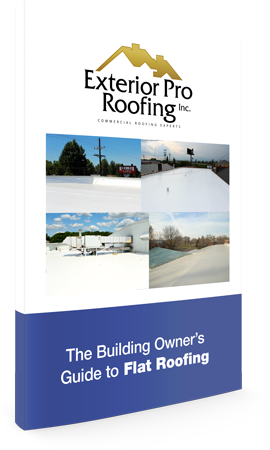If you find yourself in the research and information gathering phase of your up and coming metal roofing project, you may have already have learned about snap lock metal roofing. Snap lock metal roofing is a very popular and well know type of standing seam metal roof and it's a huge upgrade over a screw down or corrugated metal roof
However you may not be as familiar with another type of standing seam metal called the 138 T. In this blog we will compare the snap lock metal roofing to the 138 T so that you can gain a better understanding about your options when choosing the right metal roofing panel for your next project.
Table of Contents
- Repairability Male And Female Sides Vs Symmetrical Sides
- Metal Roof Trim - Flashings Matter
- Snap Lock Or Mechanically Seamed?
- Is There A Difference In Cos?
Snap lock metal roofing and the 138 T are both Standing seam metal roof panels, they are both made from 24 gauge metal and have Kynar paint, and both metal roofs use a clip system to install so they have exposed fasteners. Both types of metal roofing can be made on the job site with a metal roof machine allowing the metal panels to be full length with no seams.
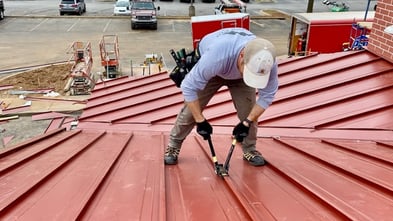
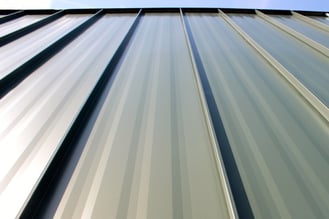
The snap lock metal and the138 T are widely installed on residential and light commercial roofing projects with great success and both types of metal roofing look great and add much curb appeal to a structure.
In a broad sense, these two types of metal roofing are very similar and both offer long term performance when installed correctly. The snap lock metal roofing and the 138 T standing seam are both great choices, however the 138 T does offer homeowners and building owners several unique advantages.
Repairability - Male And Female Sides Vs. Symmetrical Sides
Snap lock metal roofing and other types of more traditional standing seam metal roofing last a long time but the one thing they lack is repairability. The reason for this is that snap lock metal along with the other types of standing seam, has a male and female side of the metal panel. The female side is snapped onto the male side thereby making a watertight seam. The snap lock metal roofing panels are installed by snapping each new snap lock panel onto the next. This system works great until a repair is need , then its not so good. To repair a snap lock metal roof or other traditional standing seam you have to take the metal back off to get to the place the repair needs to be made and then re-install the metal again.
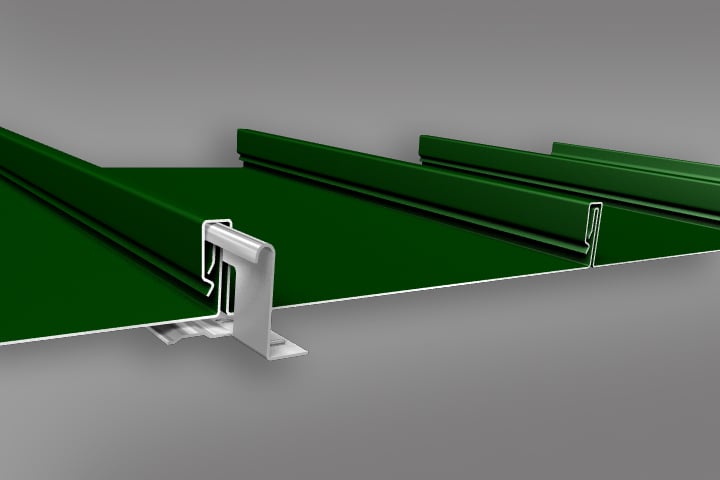
The 138 T does not use a male and a female side but rather its a symmetrical metal roofing panel. Both sides of the 138 T are identical and when they but up to each other they form a T shape. The seam between the two symmetrical slides is created by installing a seam cap and then mechanically crimping the seam cap around the T shape. To make a repair on the 138 T metal roof all you have to do is open the seam cap and then you can repair or replace the individual metal roof panel and then simply replace the seam cap. When the design is symmetrical, each metal roofing panel can be removed and replaced without removing or damaging other metal roofing panels in the process.
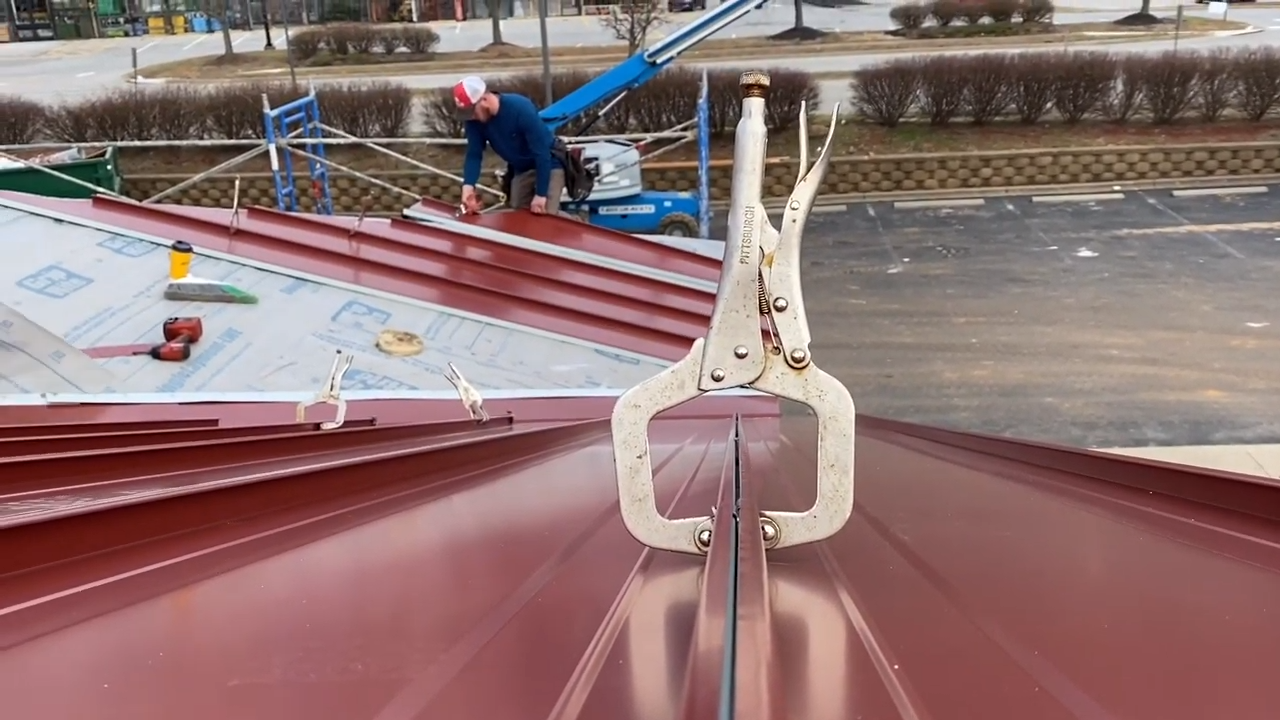
Metal Roof Trims and Flashings Matter
The flashing and trims around skylights and chimneys are a crucial part of any metal roof not just snap lock metal roofing. In Fact, it’s rare for metal roofing to leak just out in the middle of the roof somewhere, when metal roofs leak or fail, they usually do so around trims or behind roof top obstacles such as skylights, HVAC units, or chimneys.
This is where the 138 T standing seam has really changed the way we do metal roof flashing, it’s through a flashing detail called the Transverse Panel. The transverse panel detail is unique to the 138 T standing seam and offers for leak free flashing each and every time though smart innovation and evolution of standing seam metal design and function.
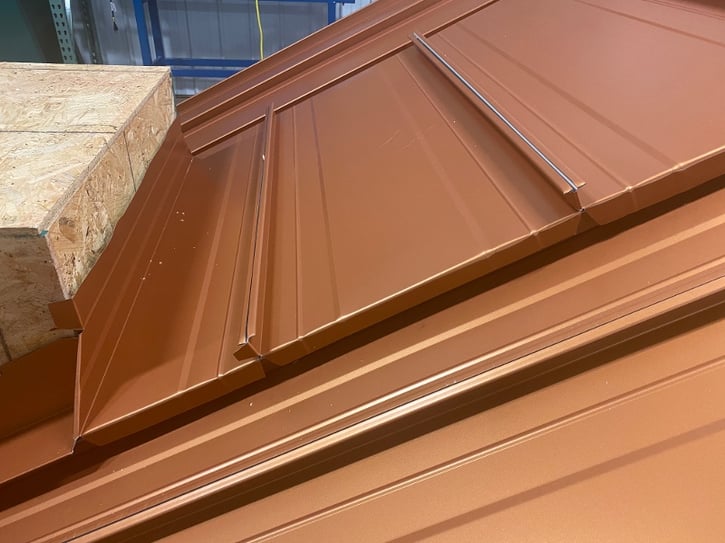
Snap Lock Or Mechanically Seamed?
When Snap lock metal roofing is installed the female leg is snapped on the male leg and thats it, the seam is created and no other work has to be done. The type of seam created by a snap lock panel is referred to as a hydro kinetic or water shedding. It’s for this reason that it’s recommended to install snap lock metal roofing on roof pitches 3/12 or above. The Snap lock roofing seam is not water proof. Rain, snow, and Ice could potential enter the seam if installed in pitches below 3/ 12
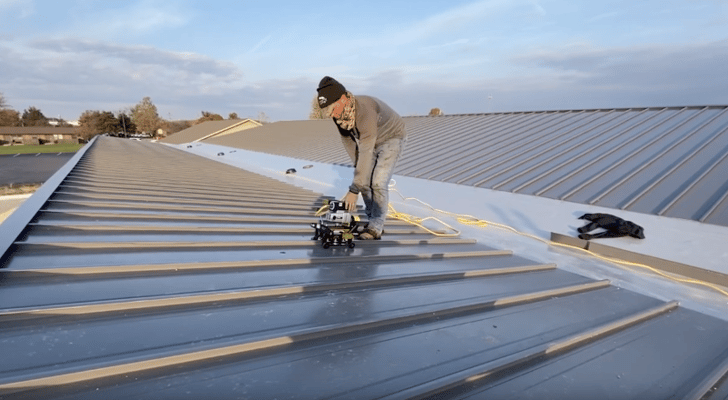
The seam created in a 138 -T standing seam is a mechanic seam meaning the pieces of metal are folded together to create a hydro static or water proof seam. This allows for the 138 T to be used successfully below roof pitches of 3 /12.
What cost more? Snap lock metal roofing or 138-T Standing Seam
Snap Lock Metal roof cost slightly less than the 138 T standing for two basic reasons:
- The seam cap that joins the 138 T together is a separate and additional component to the metal roof system that the snap lock doesn’t have
- There is a small amount of additional labor to install the 138 -T because it must be mechanically seamed with a seamer
We find that the snap lock metal roof installed will run 15% to 20% less than the 138 T standing seam metal roof installed.
The 138 T standing seam is more expensive than the snap lock metal because it does provide extra value in areas we outlined in this blog.
Is the 138 T it worth paying more for? Well that will depends on your specific metal roofing project and whether or not repairability, the metal flashings, and slope considerations are of value to you as a consumer.
Both the snap lock metal roofing and the 138- T standing seam will keep a home or business leak free and provide long term performance and both are good choices and will look great if installed correctly.


